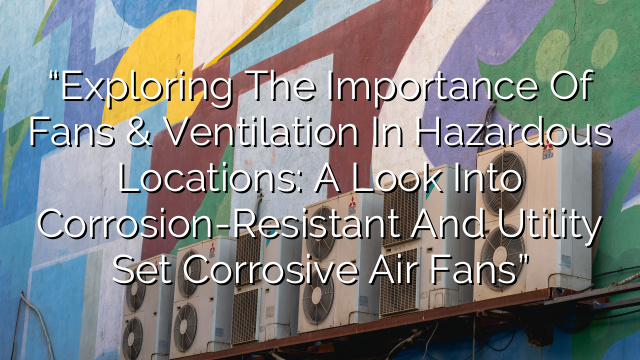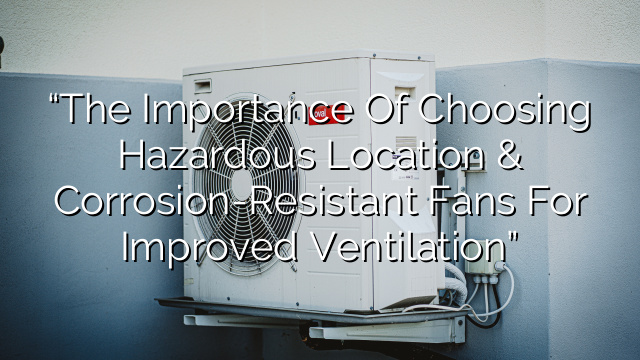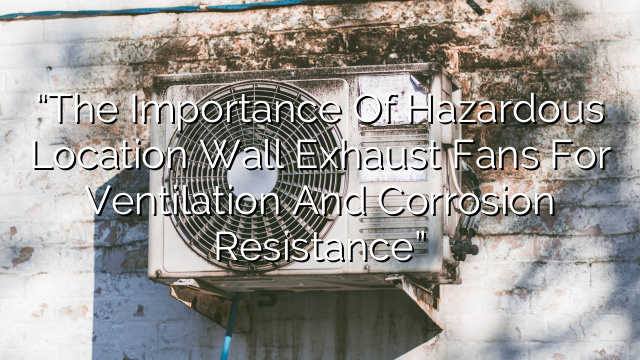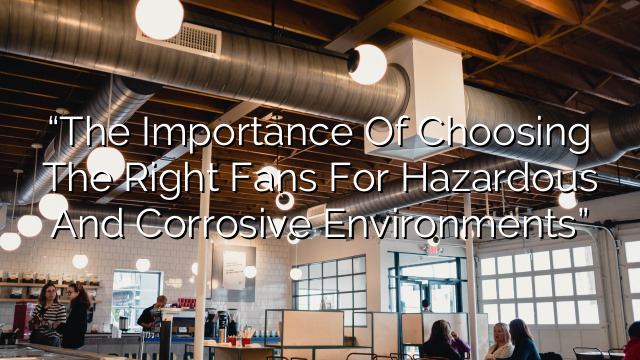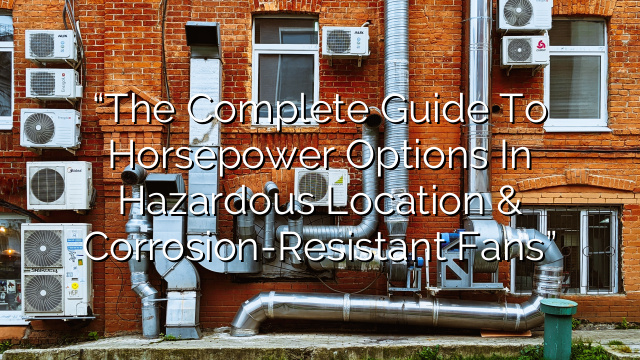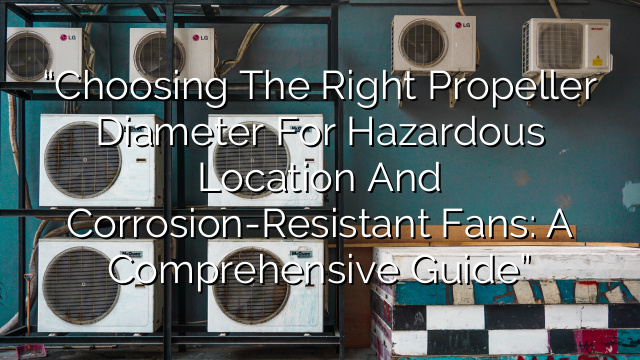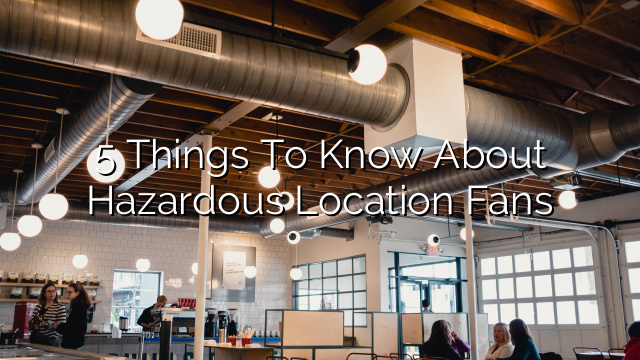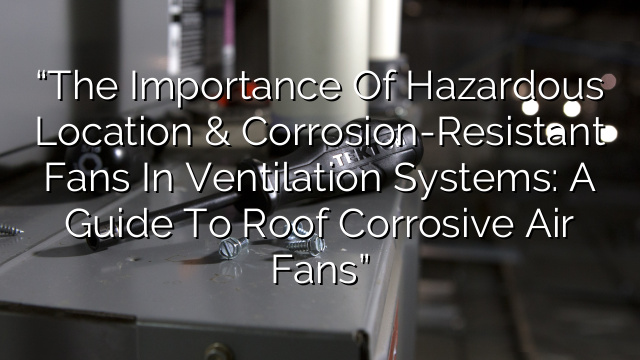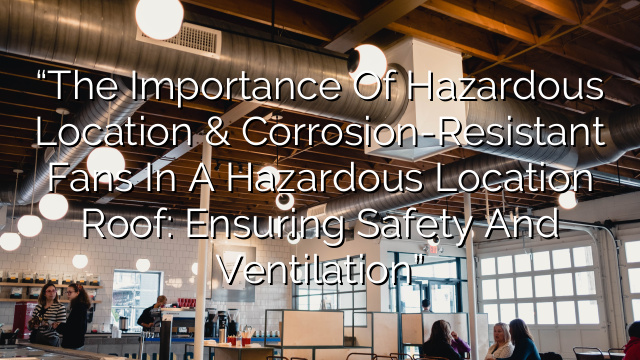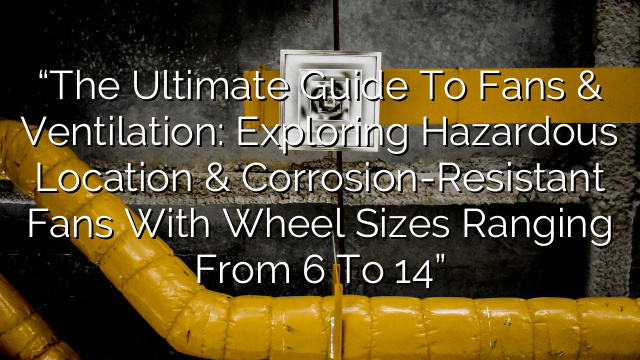Hazardous Locations and the Importance of Fans and Ventilation
When it comes to working in hazardous locations, such as chemical plants, refineries, and other facilities where flammable materials are present, safety is a top priority. One important aspect of ensuring safety in these environments is proper ventilation. Fans play a crucial role in providing ventilation in hazardous locations, and the use of corrosion-resistant and utility set corrosive air fans can enhance the effectiveness and safety of these systems.
The Importance of Fans and Ventilation in Hazardous Locations
Proper ventilation is essential in hazardous locations to prevent the build-up of flammable or toxic gases, dust, and vapors. In these environments, the risk of explosion or fire is high, and a lack of proper ventilation can have catastrophic consequences.
Fans are commonly used to provide adequate ventilation by circulating fresh air and removing hazardous substances from the air. The primary purpose of ventilation in hazardous locations is to dilute and disperse any flammable or toxic substances to safe levels. This ensures the well-being of workers and minimizes the risk of fire or explosion.
In addition to preventing the build-up of hazardous substances, ventilation also helps control temperature and humidity levels in these environments. This is crucial for maintaining the comfort and productivity of workers, as well as preserving the integrity of equipment and materials.
Corrosion-Resistant Fans for Hazardous Locations
One of the challenges in hazardous locations is the presence of corrosive substances. Corrosion can damage traditional fans and compromise their effectiveness. To address this issue, corrosion-resistant fans are specifically designed to withstand corrosive elements, enhancing their durability and ensuring longevity.
Corrosion-resistant fans are typically made of materials such as stainless steel, fiberglass reinforced plastic (FRP), or specialty coatings that offer excellent corrosion resistance. These fans are resistant to rust, chemical degradation, and other forms of corrosion commonly found in hazardous locations.
By using corrosion-resistant fans in hazardous locations, facility operators can reduce maintenance costs, extend the lifespan of the fans, and maintain optimal ventilation performance over time.
Utility Set Corrosive Air Fans
Utility set corrosive air fans are another specialized type of fan that can be found in hazardous locations. These fans are designed specifically to handle highly corrosive and aggressive air streams, such as those containing acids, alkalis, or other corrosive gases.
The construction and materials used in utility set corrosive air fans are carefully selected to resist corrosion and allow for continuous operation in harsh environments. These fans are often equipped with features such as reinforced housings, specialized coatings, and corrosion-resistant materials to ensure their reliability and functionality.
By using utility set corrosive air fans, hazardous location operators can effectively manage and control highly corrosive air streams while maintaining a safe working environment.
The Benefits of Corrosion-Resistant and Utility Set Corrosive Air Fans
The use of corrosion-resistant and utility set corrosive air fans in hazardous locations offers several benefits:
- Enhanced Safety: These specialized fans ensure the safe dilution and dispersion of hazardous substances, reducing the risk of fires and explosions.
- Longevity and Durability: Corrosion-resistant fans are designed to withstand corrosive elements and offer extended lifespan, reducing maintenance costs.
- Improved Efficiency: These fans maintain optimal ventilation performance over time, ensuring the well-being of workers and reducing equipment downtime.
- Compliance with Regulations: The use of corrosion-resistant and utility set corrosive air fans helps facilities meet safety regulations and standards for hazardous locations.
Conclusion
In hazardous locations, where the risk of fire, explosion, and exposure to hazardous substances is high, proper ventilation is of utmost importance. Corrosion-resistant and utility set corrosive air fans play a critical role in ensuring the effectiveness and safety of ventilation systems in these environments. By using these specialized fans, facility operators can maintain optimal ventilation performance, enhance safety, and comply with regulatory requirements.
Frequently Asked Questions
- 1. Why is ventilation important in hazardous locations?
Ventilation helps prevent the build-up of flammable or toxic gases, dust, and vapors, reducing the risk of fire or explosion. It also controls temperature and humidity levels for worker comfort and equipment integrity.
- 2. What are corrosion-resistant fans made of?
Corrosion-resistant fans are typically made of materials such as stainless steel, fiberglass reinforced plastic (FRP), or specialty coatings that offer excellent corrosion resistance.
- 3. What are utility set corrosive air fans?
Utility set corrosive air fans are specially designed fans that can handle highly corrosive and aggressive air streams, such as those containing acids, alkalis, or other corrosive gases.
- 4. How do corrosion-resistant and utility set corrosive air fans enhance safety?
These specialized fans ensure the safe dilution and dispersion of hazardous substances, reducing the risk of fires and explosions in hazardous locations.
- 5. What are the benefits of using corrosion-resistant and utility set corrosive air fans?
Some benefits include enhanced safety, increased longevity and durability, improved efficiency, and compliance with safety regulations.

